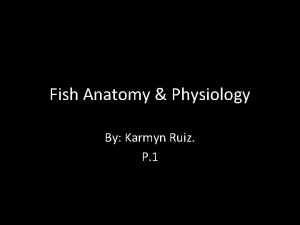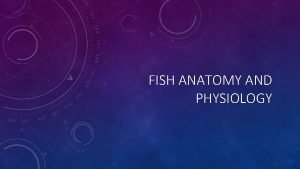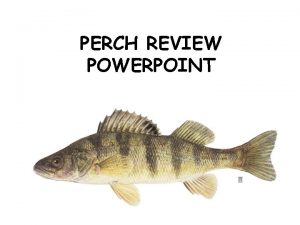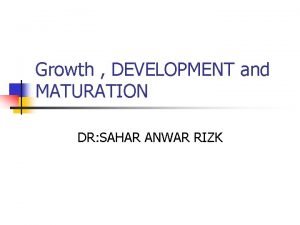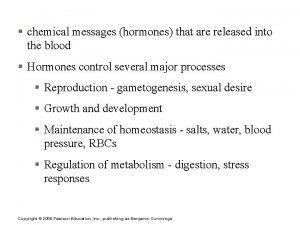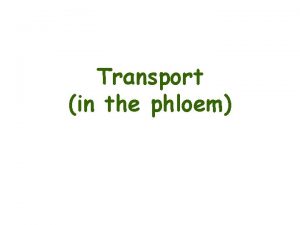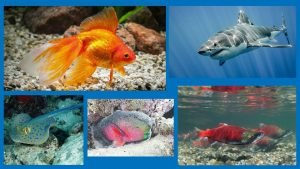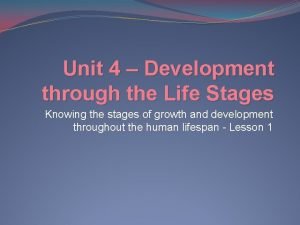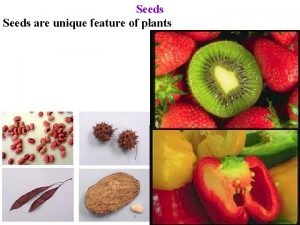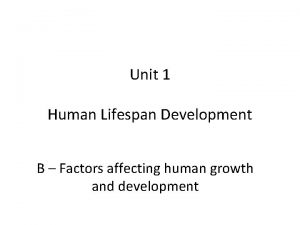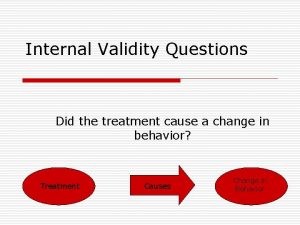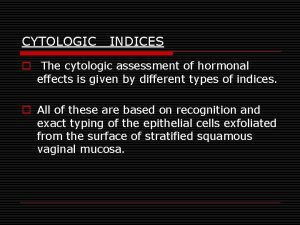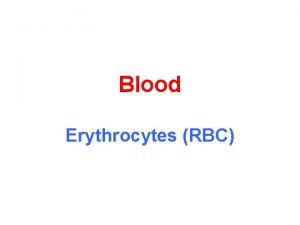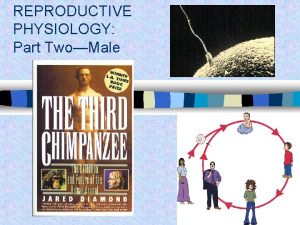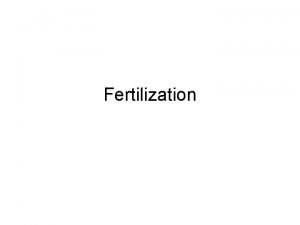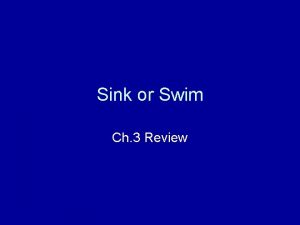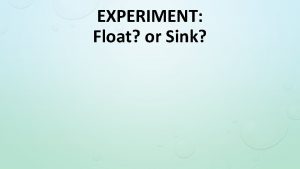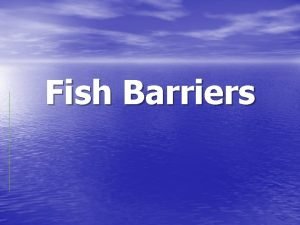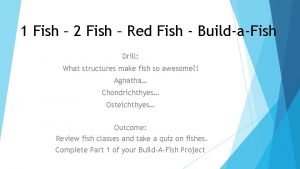Reproductive Physiology and Maturation of Fish Todd Sink



























- Slides: 27

Reproductive Physiology and Maturation of Fish Todd Sink, Ph. D. Assistant Professor, Dept. Wildlife & Fisheries Science Aquaculture & Fisheries Extension Specialist

Overview

REPRODUCTIVE CYCLES & ENVIRONMENTAL CUES Majority of teleost seasonal breeders, some breed continuously Wide variation in time of year when breeding occurs among seasonal breeders Freshwater temperate zone fish spawn in spring & early summer Salmonids & some cyprinids spawn in autumn Freshwater fish of central Amazonian floodplain lakes spawn during rainy season Vast majority of Indian freshwater fishes breed during monsoon season when rainfall is heaviest Spawning of each species precisely timed so fry are in environment in which chances of survival are maximal Natural selection possibly favors genomes of individuals that produce offspring at time most suitable for survival

REPRODUCTIVE CYCLES & ENVIRONMENTAL CUES Fish integrate physiological functions with environmental cycles Environmental factors act as cues for approaching favorable season for reproduction Impinge on exteroceptors on eyes & skin to affect central nervous system, pituitary, & gonads Such environmental factors bring endogenous rhythm into phase for precise timing of breeding Photoperiod, temperature, & seasonal rainfall important in regulating reproductive cycles fish Show considerable but precisely-timed annual fluctuations in temperate regions In tropics, dry- & wet-seasons alternate leading to seasonal differences in water quality/quantity & food

Photothermal Relationship Fish are ectotherms - principal mode of thermoregulation is behavioral Exploit thermal heterogeneity in environment by swimming into desired temps & remain there Behavioral thermoregulation demonstrated > 100 species fish Not valid to assume thermal control of metabolism & reproduction is merely providing optimal temps for enzyme activities & receptorhormone complexes Photothermal relationship on testicular weight gain in goldfish at different times during 24 -h period Depending on time of day thermo-cycle commenced, testicular weight gain can be stimulated or inhibited Prolactin & cortisol show circadian rhythmic variations in Gulf killifish Warm temp (28°C) produces 16 -h cycle between hormone peaks – summer conditions inhibit gonadal development Cool temp (20°C) produces 0 -h cycle between hormone peaks – winter conditions stimulate gonadal development


THE HYPOTHALAMUS Hypothalamus comprised of Gomori (stain)-positive nucleus preopticus (NPO) & Gomori-negative nucleus lateralis tuberis (NLT) NPO is situated on both sides of preoptic recess & composed of pars magnocellularis & pars parvocellularis Axons (thread-like part of nerve) originating from cells of NPO form the preopticohypophyseal tract which penetrates the pituitary NLT located in posterior part of hypothalamus & subdivided into pars rostralis, pars medialis, pars ventrolateralis & pars lateralis Axons from NLT nuclei terminate at adenoneurohypophyseal interface Hypophyseal portal system - system of blood vessels in brain connects hypothalamus with pituitary – fish do not have portal system

Hypothalamic regulation of gonadotropic function Hypothalamic regulates activity of gonadotropic cells in pituitary NLT axons of pars distalis innervate gonadotropic cells & stimulate to discharge secretions into peri-vascular spaces surrounding cells NLT secretory products may also be released into blood vessels in some fish In some species (goldfish & black molly), gonadotropic cells also directly innervated by axons originating in NPO Implicates both NPO & NLT in regulation of gonadotropic functions of the pituitary In rainbow trout, NPO active during vitellogenic & spawning periods while inactive in sexually inactive period


Gonadotropin-releasing hormones Presence of gonadotropin-releasing hormones (Gn. RH) in brain Dorsalis pars medialis, meso-adenohypophysis, & pituitary stalk Gn. RH activity found in crude hypothalamic extracts from many fish (cyprinids, salmonids) Hypothalamic Gn. RH extracts promote release of gonadotropins when injected into other fish Partially characterized Gn. RH from extracts of common carp Small molecule - molecular weight of <5000 Fish Gn. RH not same as mammalian LH-RH Does not cross react with anti-mammalian-LH-RH

Synthetic Gonadotropin-releasing Hormone in Fish Mammalian LH-RHa cheap, easily-made synthetic, & biologically active in many fish Large doses mammalian LH-RH produces release of gonadotropins in common carp, brown trout, & goldfish Nonapeptide analogue of LH-RH more potent & longer acting gonadotropin release than LH-RH itself Multiple LH-RHa injections over several days induces ovulation Male response to mammalian LH-RHa poor at onset of spermatogenesis Response increases at spermatid stage & continues during rest of spermatogenesis & spermiation Pituitary response of LH-RHa low in early-stage maturity fwmales Becomes increased at vitelline maturation (vitellogenesis) LH-Rha only useful as late-maturation induced spawning hormone

Synthetic Gonadotropin-releasing Hormone in Fish Gn. RH from fish – amino acid sequence can be slightly different for each species Salmon s. Gn. RHa Cheap, easily-made synthetic, active in many fish species, effective for maturation in early stage fish Preferred method of induced spawning


PITUITARY GLAND Pituitary gland in all vertebrates composed of 1. Adenohypophysis (anterior pituitary) derived from Rathke's pouch (pouch at roof of mouth) 2. Neurohypophysis (posterior pituitary) derived from diencephalon (neural tube) Adenohypophysis regulates gonadal functions Is site of synthesis, storage & release into circulation of several peptide & protein hormones in fish Adenohypophysis divided into rostral & proximal pars distalis, & pars intermedia

Identification of gonadotrophs Cell types in fish pituitary Anterior pituitary basophil cells – type of granulocyte 1. Corticotrophs 2. Thyrotrophs 3. Gonadotrophs Gonadotropin Secrete Basophil secreting cells located in proximal pars distalis luteinizing hormone (LH) & gonadotropin (Gt. H I & II) gonadotroph cells become more numerous & heavily granulated during breeding season


Pituitary and plasma gonadotropin levels Pituitary gonadotropin release circadian pattern Pituitary gonadotropin decreases significantly shortly after dawn Gt. H released at faster than synthesis during brief period Pituitary gonadotropin remains stable rest of day/night

Gonadotropin chemistry & immunological properties Fish gonadotropins are glycoproteins Amino acid composition of gonadotropins from fish similar to mammalian LH Gonadotropins from most fish composed of two subunits, alpha & beta chains Alpha subunit of carp Gt. H similar to mammalian folliclestimulating hormone (FSH) Beta subunit of carp Gt. H is closely related to beta subunit of mammalian LH Gt. H secretion gradually increased to stimulate gonadal recrudescence Spike of Gt. H induces spermiation or ovulation


THE OVARY Ovary is hollow sac-like organ lined by germinal epithelium Germ cells multiply mitotically & transform into nonyolky primary oocytes with nuclei arrested at prophase of first meiotic division Processes can occur in absence of pituitary Primary oocytes covered by layers of follicle cells undergo vitellogenesis when yolk is deposited in ooplasm During maturation, 1 st polar body generated & 2 nd meiotic division arrested at metaphase Eggs spawned at this stage & 2 nd polar body expelled after fertilization

THE TESTES Fish testes show greater morphological variation than other vertebrates Typically, elongated structures composed of branching seminiferous tubules that contain spermatogonia (germ cells) Germ cells divide in clusters enclosed by cyst Androstenedione induces primary spermatogonia to divide mitotically to secondary spermatogonia, which transform into primary spermatocytes 11 -ketotestosterone induces division of spermatocytes by meiosis to form spermatids from which spermatozoa are formed Seminiferous tubules packed with spermatozoa in prospawning & spawning periods


Cellular source of steroid hormones Cells involved in steroidogenesis have smooth endoplasmic reticulum & tube-shaped mitochondria Contain key enzymes for biosynthesis of steroids Granulosa (follicle associated) cells Ovarian or testicular (Leydig) interstitial cells Ovarian thecal (follicular) cells Ovary produces C 18 estrogenic steroids 17ß Ovary estradiol, estrone, estriol produces C 19 & C 21 non-estrogenic steroids 1 -deoxycorticosterone, 11 -deoxycortisol, epipregnanolone , progesterone Testes produce C 19 & C 21 steroids 11 -ketotestosterone & 11 -oxygenated androgens


HORMONAL REGULATION OF VITELLOGENESIS Embryos dependent on egg-yolk for nutrition Vitellogenesis is process of yolk deposition in oocytes Vitellogenin female-specific glycolipoprotein synthesized in liver in response to circulating estrogens Transported to ovary, absorbed by oocytes, cleaved into egg-yolk proteins (lipovitellin & phosvitin), & deposited as yolk 2 vitellogenins Low carbohydrate glycoprotein gonadotropin stimulates vitellogenesis to induce yolk incorporation High carbohydrate glycoprotein gonadotropin stimulates estradiol secretion to induce maturation & ovulation

HORMONAL REGULATION OF OOCYTE MATURATION & OVULATION Maturation accomplished by 2 successive meiotic divisions during 1 st meiotic division - primary oocyte nucleus moves to peripheral position, its membrane breaks down, and a polar body is expelled 2 nd meiotic division starts immediately but progresses only to metaphase stage, distinct animal pole differentiates from vegetal pole, yolk undergoes maturation & hydration, oil droplets coalesce to form one larger globule Soon after, prostaglandins act to ovulate mature oocyte from follicular envelope, acquires jelly membrane, ovulated eggs are spawned in water, & immediately fertilized by male

ENVIRONMENTAL REGULATION OF OOCYTE MATURATION & OVULATION Environmental conditions required for initiation of oocyte maturation, ovulation, & spawning stricter than for gametogenesis When present, precise environmental factors required for maturation, ovulation & spawning stimulate accelerated release of gonadotropin from pituitary In majority of fish, maturational process initiated only when thermal conditions are optimum In others, precise combination of day length & temperature required In others, rainfall & inundation precipitate maturational events required
 One fish two fish red fish blue fish ride
One fish two fish red fish blue fish ride Twofish and blowfish
Twofish and blowfish One fish two fish red fish lungfish
One fish two fish red fish lungfish Chapter 2 human reproductive anatomy and physiology
Chapter 2 human reproductive anatomy and physiology Reproductive physiology
Reproductive physiology Cycloid scales
Cycloid scales Fish anatomy and physiology
Fish anatomy and physiology Bony vs cartilaginous fish
Bony vs cartilaginous fish Claspers are structures involved in:
Claspers are structures involved in: Perch external anatomy
Perch external anatomy A big fish swims up and swallows a small fish at rest
A big fish swims up and swallows a small fish at rest Maturation in growth and development
Maturation in growth and development Learning can be defined as
Learning can be defined as Hormonal stimulus
Hormonal stimulus Bulk flow in phloem
Bulk flow in phloem Source and sink flow
Source and sink flow Source and sink flow
Source and sink flow Fishbony
Fishbony Are cut evenly from large slabs of frozen fillet
Are cut evenly from large slabs of frozen fillet Maturation definition
Maturation definition Seed maturation
Seed maturation What is the maturation theory of child
What is the maturation theory of child Affinity maturation somatic hypermutation
Affinity maturation somatic hypermutation Gesell's theory
Gesell's theory Selection by maturation interaction
Selection by maturation interaction Maturation in psychology
Maturation in psychology Maturation index 0/90/10
Maturation index 0/90/10 Macrocytic hypochromic anemia
Macrocytic hypochromic anemia





